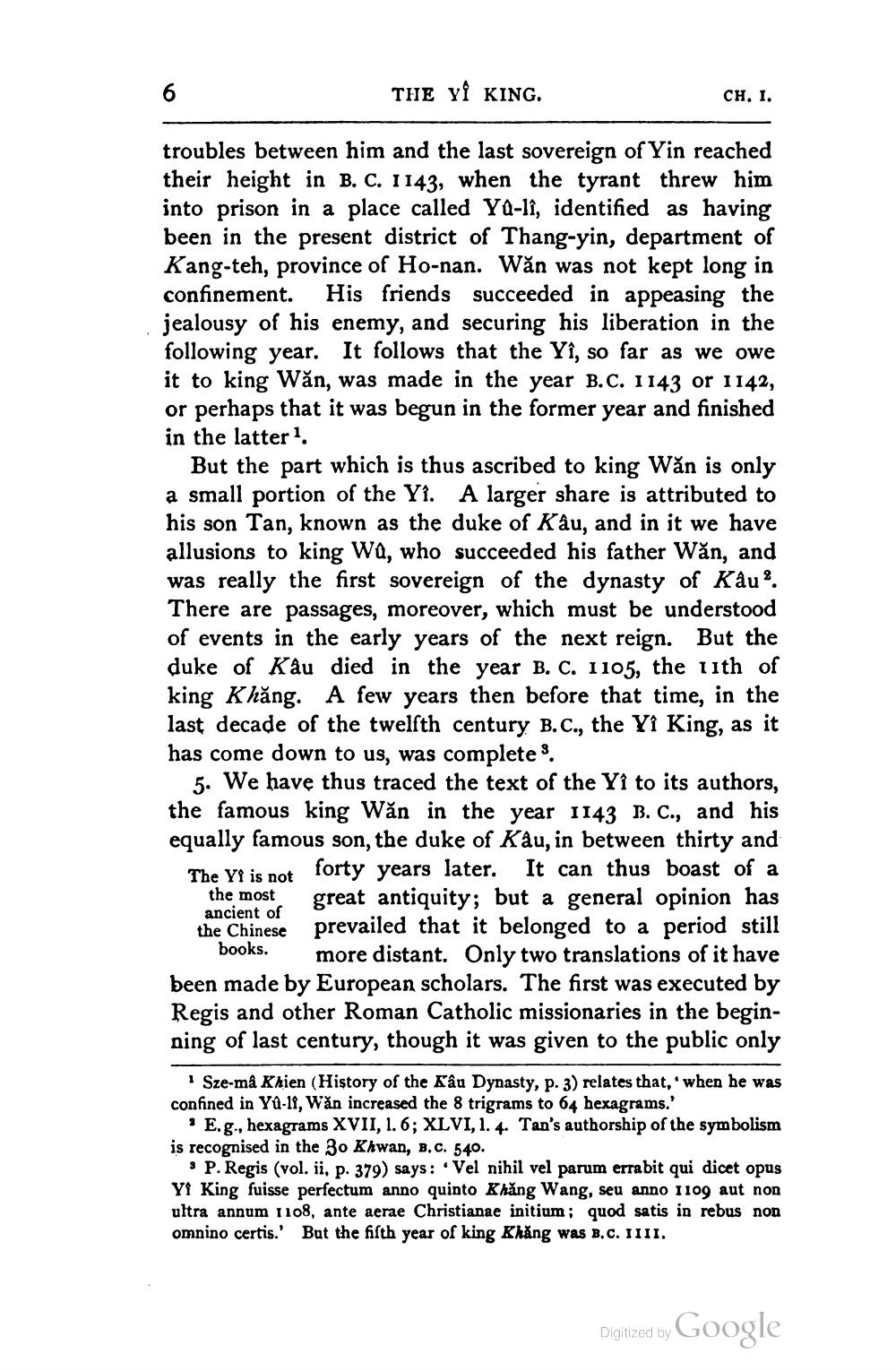________________
THE YI KING.
CH. 1.
troubles between him and the last sovereign of Yin reached their height in B. C. 1143, when the tyrant threw him into prison in a place called Yu-lî, identified as having been in the present district of Thang-yin, department of Kang-teh, province of Ho-nan. Wăn was not kept long in confinement. His friends succeeded in appeasing the jealousy of his enemy, and securing his liberation in the following year. It follows that the Yî, so far as we owe it to king Wăn, was made in the year B.C. 1143 or 1142, or perhaps that it was begun in the former year and finished in the latter
But the part which is thus ascribed to king Wăn is only a small portion of the Ył. A larger share is attributed to his son Tan, known as the duke of Kâu, and in it we have allusions to king Wa, who succeeded his father Wăn, and was really the first sovereign of the dynasty of Kâu. There are passages, moreover, which must be understood of events in the early years of the next reign. But the duke of Kâu died in the year B. C. 1105, the uth of king Khăng. A few years then before that time, in the last decade of the twelfth century B.C., the Yi King, as it has come down to us, was complete
5. We have thus traced the text of the Yî to its authors, the famous king Wăn in the year 1143 B. C., and his equally famous son, the duke of Kau, in between thirty and The Yi is not forty years later. It can thus boast of a
the most great antiquity; but a general opinion has ancient of the Chinese prevailed that it belonged to a period still
books. more distant. Only two translations of it have been made by European scholars. The first was executed by Regis and other Roman Catholic missionaries in the beginning of last century, though it was given to the public only
· Sze-må Khien (History of the Kâu Dynasty, p. 3) relates that, when he was confined in YU-11, Wăn increased the 8 trigrams to 64 hexagrams.'
IE. g., hexagrams XVII, 1.6; XLVI, 1. 4. Tan's authorship of the symbolism is recognised in the 30 Khwan, B.C. 540.
: P. Regis (vol. ii, p. 379) says: Vel nihil vel parum errabit qui dicet opus Yi King fuisse perfectum anno quinto Khăng Wang, seu anno 1109 aut non ultra annum 1108, ante aerae Christianae initium ; quod satis in rebus non omnino certis.' But the fifth year of king Khăng was B.C. IIII.
Digitized by Google




